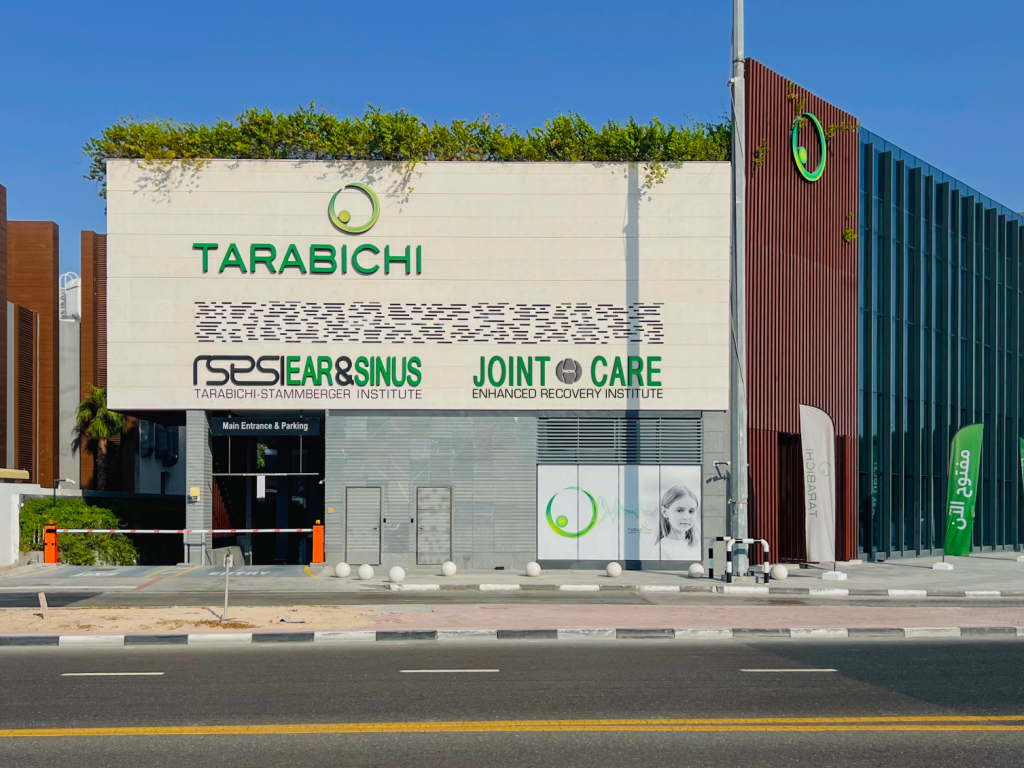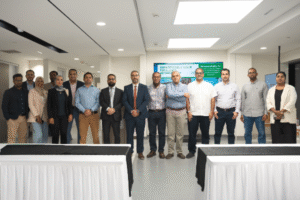Knee Ligament Injuries Explained: Understanding ACL, PCL, MCL & LCL Tears

Your knee is one of the most complex joints in your body, supported by four major ligaments that keep it stable and allow smooth movement. When one of these ligaments is stretched or torn, it can lead to pain, instability, and limited mobility. Let’s break down the key ligaments: ACL, PCL, MCL, and LCL – and what happens when they’re injured.
These ligaments act like strong bands of tissue, connecting the thigh bone (femur) to the shinbone (tibia) and working together to control movement. They help you run, jump, pivot, and absorb impact during daily activities and sports. Without their support, even simple movements like walking or climbing stairs can become difficult.
Knee ligament injuries are common in both athletes and non-athletes. They may result from sports accidents, falls, sudden twists, or direct blows to the knee. Understanding how each ligament functions and how injuries happen is the first step in recognizing symptoms early and seeking the right treatment for a safe recovery.
At Tarabichi Joint Care, we specialize in diagnosing and treating a wide range of knee ligament injuries with a patient-centered approach. Our team combines advanced diagnostic tools, minimally invasive techniques, and personalized rehabilitation plans to help patients restore mobility, reduce pain, and return to their normal activities.
About
Tarabichi Joint Care
At Tarabichi Joint Care, we are dedicated to offering world-class orthopedic care with a focus on joint health and comprehensive rehabilitation. Founded by the renowned Dr. Samih Tarabichi, a pioneer in joint replacement in Dubai, our center stands as a beacon of excellence in the Middle East and beyond. With cutting-edge technologies, a patient-centered approach, and a team of highly specialized professionals, we strive to enhance the quality of life for individuals suffering from joint-related conditions.
Understanding ACL
The Anterior Cruciate Ligament (ACL) is one of the most recognized knee ligaments due to its prevalence in sports injuries. The ACL connects the thigh bone (femur) to the shinbone (tibia), acting as a stabilizer during rotational movements, sudden stops, and quick directional changes.
Common Causes of ACL Injury
ACL injuries often occur during activities that involve sudden deceleration or pivoting, such as:
- Basketball or football maneuvers
- Soccer kicks or sudden pivots
- Skiing mishaps
- Improper landing after a jump

Certain factors can also increase the likelihood of an ACL injury: weaker muscles around the knee, overuse, previous injuries, and anatomical differences—such as a wider pelvis in female athletes which affects the knee angle (Q-angle).
Symptoms of an ACL Tear
Recognizing an ACL injury early is key to preventing further damage. Typical signs include:
- A loud pop or snap at the time of injury
- Immediate swelling and pain
- Knee instability or a sensation of “giving out”
- Limited range of motion
Effects on Athletes
An ACL injury is not just a physical setback; it can impact an athlete’s mental state, confidence, and performance. Recovery after ACL reconstruction surgery typically spans 6 to 12 months and may include:
- Increased risk of meniscus tears
- Long-term knee instability
- Early-onset arthritis
- Psychological barriers such as fear of reinjury

Read : ACL Tears in Athletes: Diagnosis, Treatment, and Recovery
ACL tears in athletes are very common but can affect an athlete’s physical, emotional, and even professional life. Read the blog to know about the causes, diagnosis and treatment of ACL tear
Understanding PCL Injuries
The Posterior Cruciate Ligament (PCL) is located at the back of the knee and is responsible for preventing the tibia from moving backward relative to the femur. PCL injuries are less common than ACL tears but often occur from:
- Car accidents where the knee strikes the dashboard
- Direct blows to the knee
- Falls or hyperextension injuries
Symptoms of PCL Injury
Signs of PCL injury may include:
- Pain at the back of the knee
- Swelling and stiffness
- Difficulty bending or walking
- Feeling of instability, especially when descending stairs or slopes
Treatment of PCL Injuries
The approach to PCL injuries depends on the severity:
- Mild sprains can often be managed with bracing, physiotherapy, and activity modification.
- Severe tears may require surgical reconstruction followed by structured rehabilitation.
Early intervention is important to maintain knee function and prevent long-term complications.
Understanding MCL Injuries
The Medial Collateral Ligament (MCL) runs along the inner side of the knee, providing stability against forces that push the knee inward. MCL injuries are common in contact sports such as football, hockey, and soccer.
Symptoms of MCL Injury
Typical signs of MCL injury include:
- Pain along the inner knee
- Swelling and tenderness
- Instability during side-to-side movements
- Difficulty walking or changing direction
Treatment of MCL Injuries
MCL injuries are often treated non-surgically unless severe:
- Mild to moderate injuries: Managed with rest, bracing, and physiotherapy
- Severe tears: May require surgical repair
Physiotherapy focuses on restoring strength, flexibility, and stability to allow safe return to activity.


Understanding LCL Injuries
The Lateral Collateral Ligament (LCL) supports the outer part of the knee and resists forces pushing the knee inward from the opposite side. LCL injuries are less common than ACL or MCL injuries but can occur due to trauma, falls, or abrupt sideways movement.
Symptoms of LCL Injury
Signs include:
- Pain on the outer knee
- Swelling and tenderness
- Difficulty with lateral movements
- Feeling of knee instability
Treatment of LCL Injuries
Treatment depends on the severity:
- Mild sprains: Rest, knee bracing, and physiotherapy
- Severe tears: Surgical reconstruction may be required, followed by structured rehabilitation
Diagnosing Knee Ligament Injuries
Accurate diagnosis is essential for effective treatment. Orthopedic specialists typically use a combination of:
- Physical examination – Assessing swelling, tenderness, range of motion, and ligament stability
- Patient history – Understanding how the injury occurred, including activity type and mechanism
- Imaging tests – MRI scans to visualize soft tissue damage and X-rays to rule out fractures
Prompt diagnosis helps prevent secondary injuries and ensures the right treatment approach.
Treatment Options
Non-Surgical Treatments
For mild to moderate ligament injuries, non-surgical care may suffice:
- Rest and Ice – Reduces inflammation and pain
- Anti-inflammatory medications – Help manage pain and swelling
- Physiotherapy – Focuses on strength, flexibility, and functional recovery
- Knee Bracing – Provides stability during movement and prevents further injury
Surgical Treatments
Severe ligament injuries, particularly ACL or multi-ligament tears, may require surgery:
- ACL/PCL Reconstruction – Torn ligaments replaced with grafts from the patient or a donor
- Arthroscopic Surgery – Minimally invasive approach using small incisions, reducing recovery time and risk of infection
Rehabilitation
Rehabilitation is a cornerstone of recovery, regardless of whether surgery is needed. It includes:
- Gradual strengthening exercises for quadriceps, hamstrings, and calf muscles
- Balance and coordination training to restore functional stability
- Monitoring safe return to sports or daily activities
- Nutritional support to enhance tissue healing
Rehabilitation plans are personalized and guided by orthopedic specialists to ensure optimal recovery.
Prevention Strategies
While no strategy can completely eliminate the risk of ligament injuries, the following can significantly reduce the likelihood:
- Strength Training – Focus on quadriceps, hamstrings, glutes, and core muscles
- Proper Warm-ups and Cool-downs – Prepares muscles and joints for physical activity
- Neuromuscular Training – Improves balance, coordination, and reaction time
- Supportive Footwear – Reduces stress on the knee joint
- Avoiding Overtraining – Allows tissues to recover and adapt
- Knee Bracing – Provides added stability during high-risk activities
Adopting these measures can protect your knees and maintain long-term joint health.
Do ACL, PCL, LCL & MCL Injuries Heal the Same Way?
Knee ligaments – ACL (Anterior Cruciate Ligament), PCL (Posterior Cruciate Ligament), LCL (Lateral Collateral Ligament), and MCL (Medial Collateral Ligament) – each play a unique role in stabilizing the knee. Because of their different positions and functions, the way they heal after injury can vary significantly.
- ACL Injuries: The ACL is crucial for front-to-back stability and pivoting movements. Complete tears often require acl reconstruction, while partial tears may heal with structured physiotherapy. Recovery typically ranges from 6 to 12 months depending on severity and treatment.
- PCL Injuries: The PCL stabilizes the knee from backward movement. Many PCL injuries are partial and can heal without surgery, relying on physical therapy and protective bracing. Full recovery may take 3 to 6 months.
- MCL Injuries: The MCL is on the inner side of the knee and often heals naturally because it has good blood supply. Mild to moderate injuries usually recover with rest, bracing, and rehabilitation in 4 to 8 weeks, while severe tears may require surgical repair.
- LCL Injuries: Located on the outer side of the knee, the LCL is less commonly injured. Recovery depends on the injury’s severity; mild sprains heal with physiotherapy, while complete tears might need surgery. Recovery typically ranges from 6 weeks to several months.
Key Takeaway: Not all knee ligaments heal the same way. Treatment and recovery timelines differ based on the ligament involved, the extent of the injury, and the patient’s overall health. Early diagnosis and a personalized rehabilitation plan are essential for restoring stability and preventing long-term complications.
Why Choose Tarabichi Joint Care – Home to the Best Orthopedic Doctor in Dubai
Knee ligament injuries can have a profound effect on both lifestyle and athletic performance. At Tarabichi Joint Care, we understand the importance of restoring mobility, stability, and confidence.
Our team of orthopedic specialists in Dubai offers:
- Comprehensive diagnosis using advanced imaging and clinical assessments
- Personalized treatment plans tailored to each patient’s needs
- Expertise in both surgical and non-surgical interventions
- Structured rehabilitation programs for safe return to daily activities or sports
- Focus on long-term joint health and prevention of future injuries
Whether you’re an athlete striving to return to peak performance or someone seeking relief from knee pain, our specialists combine cutting-edge techniques with compassionate care to ensure the best outcomes.
Final Thoughts
Knee ligament injuries— ACL, PCL, MCL, and LCL—are common but manageable with timely intervention. Understanding the type of ligament involved, the mechanism of injury, and the appropriate treatment strategy is essential for recovery. Early diagnosis, proper rehabilitation, and preventive care can help restore knee function, minimize complications, and allow you to resume an active, healthy lifestyle.
With the right orthopedic guidance, such as the expert team at Tarabichi Joint Care in Dubai, patients can confidently navigate their recovery journey and return to the activities they love.

Get Your Appointment For Expert Joint Care
At Tarabichi Joint Care, we are dedicated to providing exceptional orthopedic treatment in Dubai. We specialize in the Enhanced Recovery Program, which emphasizes on quicker healing post-surgery. If you’re considering knee replacement surgery, let us help you on your journey to pain-free living.





